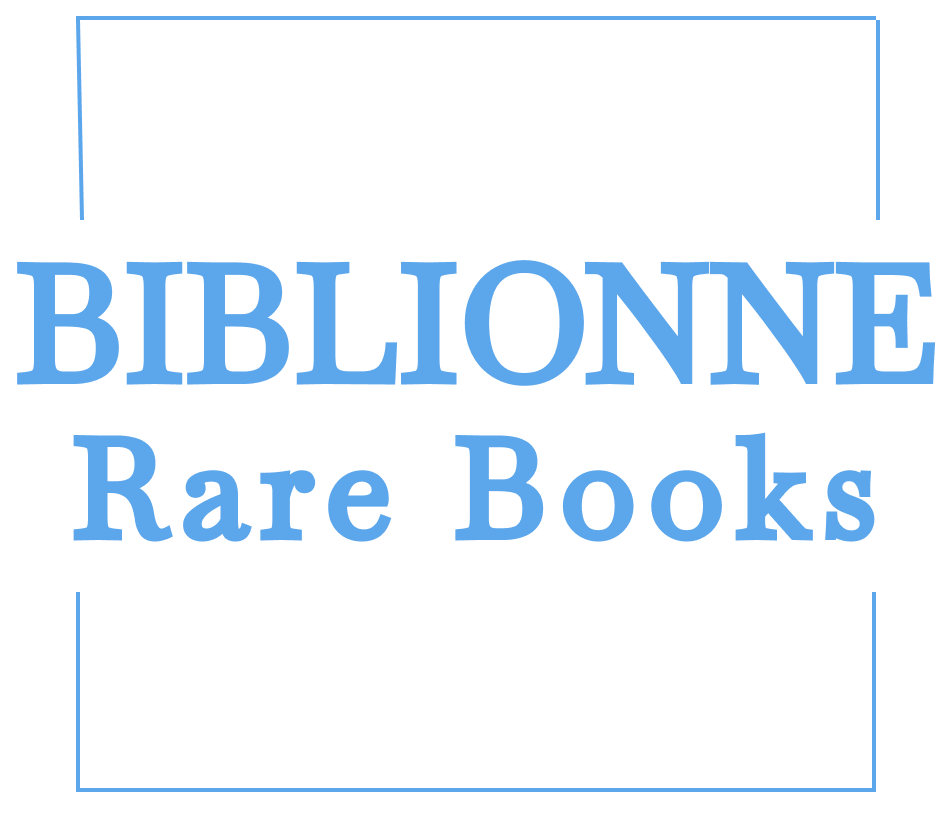Hiroshima: A Series of Panels by the International Peace Prize Laureates, Japanese Artists Iri Maruki and Toshiko Maruki.
Hiroshima: A Series of Panels by the International Peace Prize Laureates, Japanese Artists Iri Maruki and Toshiko Maruki.
Couldn't load pickup availability
[Maruki, Toshi; Maruki, Iri] [Hiroshima: A Series of Panels by the International Peace Prize Laureates, Japanese Artists Iri Maruki and Toshiko Maruki]. Khirosima: Seriia Panno Laureatov Mezhdunarodnoi Premii Mira Iaponskikh Khudozhnikov Iri Maruki i Tosiko Maruki.
Preface by Mikhail Kotov.
Moskva, Sovetskii khudozhnik, 1959.
Oblong 8vo, 16, [27] pp., ill.
In original wrappers and pictorial dust jacket.
In good condition, light worn and minor losses to dj spine. The copy contains an additional staple, which was mistakenly inserted during the binding process.
A catalog for the personal exhibition of the Maruki artists, marking the first solo exhibition of any contemporary Japanese artist in the USSR.
The Japanese artist Maruki Toshi (丸木俊; 1912–2000) and her husband Maruki Iri (丸木位里; 1901–1995) are best known for their powerful work, The Hiroshima Panels (原爆の図) — a series of painted folding screens depicting the devastating aftermath of the atomic bombings of Hiroshima and Nagasaki. In 1945, just days after the bombing, the Marukis traveled to Hiroshima to assist surviving members of Iri’s family, becoming firsthand witnesses to the catastrophic effects of the nuclear attack. Two years later, they began collaborating on the Hiroshima Panels. However, due to American censorship during the occupation of Japan, the Marukis faced significant challenges in exhibiting their works. Despite this, they played a crucial role in raising awareness about the damage caused by the atomic bombs, which was not widely reported at the time due to censorship. In January 1953, the Marukis were awarded the International Peace Prize by the World Peace Council. By the late 1950s, their Hiroshima Panels began to be exhibited internationally, drawing global attention to their powerful anti-war message. In 1995, the Marukis were nominated for the Nobel Peace Prize, and their legacy and activism also played a significant role in the 2024 Nobel Peace Prize awarded to Nihon Hidankyo, a group founded in 1956 to advocate for survivors of the atomic bombings of Hiroshima and Nagasaki.
During the Cold War, the pacifist themes of the Marukis art resonated with Soviet ideology, making their exhibition an attractive showcase for the USSR.
It is worth noting, however, that despite the efforts of various activists, contemporary Japanese art remained largely unknown in the USSR. Exceptions included a few exhibitions of Japanese children’s art and Japanese cinema in the late 1920s. By 1930, relations between Japan and the USSR had become strained, leading to the repression of many Japanologists during the Great Purge. During World War II, all cultural exchanges between the two countries came to a halt. Japanese contemporary art was not shown in the USSR until 1956 (to a select group of viewers, primarily from the art community) and 1957, when it reached a wider audience as part of the International Exhibition at the 6th World Festival of Youth and Students. Two years later, in 1959, the first solo exhibition by a contemporary Japanese artist in the USSR took place: The Hiroshima Panels were displayed in one of the pavilions of Gorky Park in Moscow. The exhibition later toured several cities across the USSR, marking a significant moment in cultural exchange between the two nations.
The Maruki artists played a crucial role in facilitating cultural exchanges between Japan and the USSR. Without their eRorts, many exhibitions might not have occurred. Since there was no formal cultural agreement between the two countries, the Marukis used their personal connections to bring in young Japanese artists, organize group exhibitions, and enrich Soviet museum collections. Their influence was so significant that, in the 1960s, the Union of Artists and the Soviet Peace Committee even allocated funds for the construction of a peace museum in Japan. Despite their contributions, after the Marukis left the Communist Party of Japan and visited the USA in 1970, their names were subject to an unofficial ban in the USSR, only mentioned in connection with their Hiroshima Panels series. Nevertheless, they remained symbols of contemporary Japanese art until the end of the Soviet era.
OCLC locates only one copy of this edition: in the Amherst College Library.






